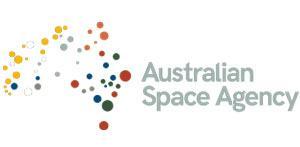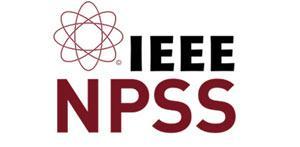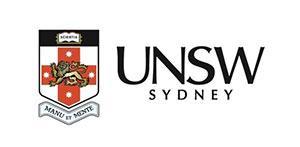The School of Space Qualification (SSQ) is a professional development course designed for a diverse audience, including students, engineers, physicists, computing scientists, lawyers, entrepreneurs, consultants, and advisors in the space and defence industry.
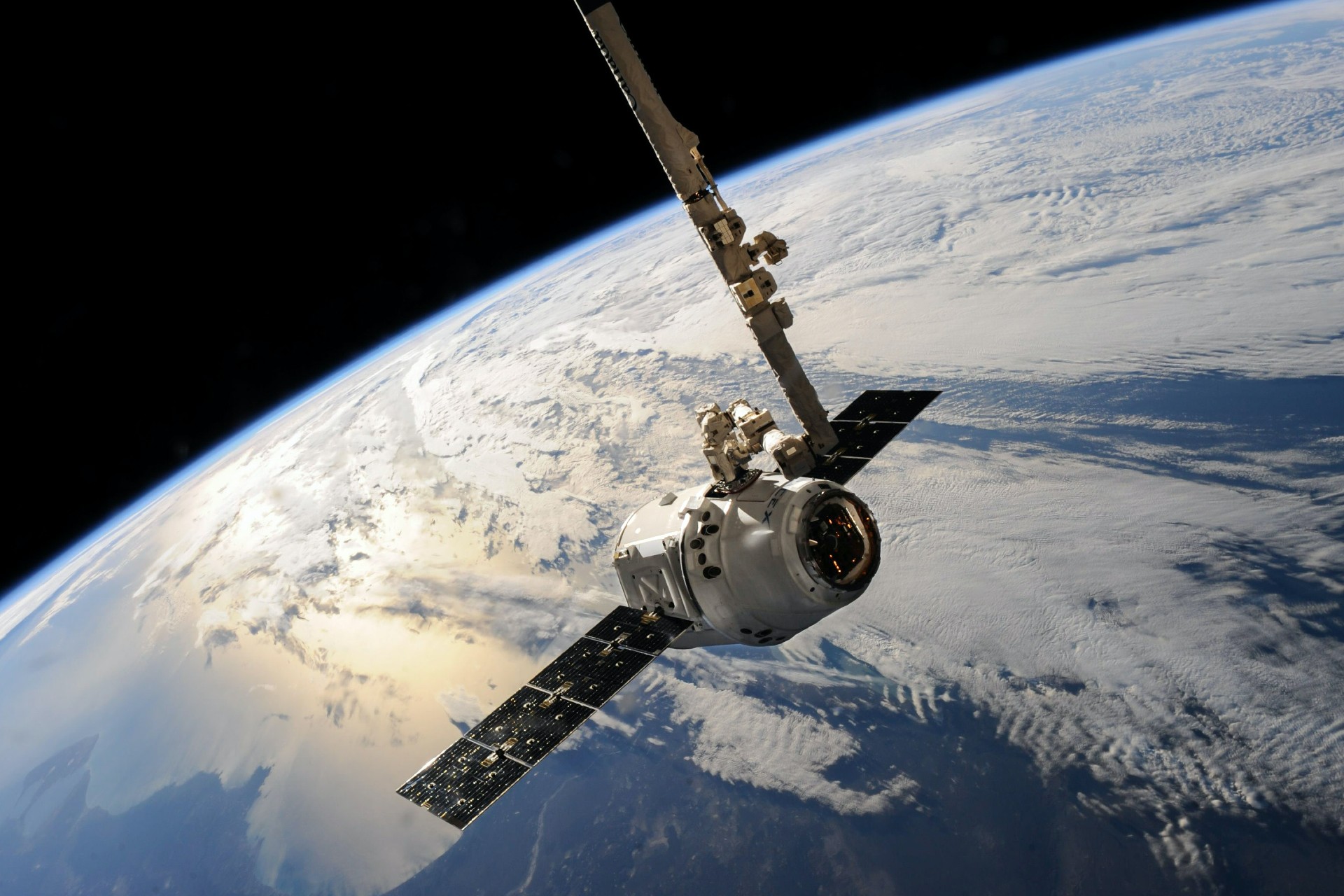
Delivered by internationally recognised leaders in the Space Industry
Space Qualification 2024
Mooloolaba, QLD
12-15 February
Learn from internationally recognised leaders
Renowned international experts in the space industry will lead this program, focusing on space qualification requirements, radiation effects in microelectronics, radiation hardness assurance, reliability, testing facilities, and radiation dosimetry. This event also offers an exceptional opportunity for international collaboration in the field of space science. Notably, attendees can participate in an Industrial Exhibition organised by Australian and international space agencies and companies.
The School of Space Qualification is proudly presented by the Centre for Medical Radiation Physics (CMRP) at the University of Wollongong and is supported by IEEE NPSS, National Space Qualification Network (NSQN), the Australian Space Agency (ASA), and the University of New South Wales (UNSW).
Optional activities
As an optional extra, covered by the registration fee, the following activities are scheduled for the week leading up to the conference. Availability is limited, so please express your interest when registering for either event.
- Single Event Effect (SEE) study on an accelerator at ANSTO on the 8 February
OR
- Single Event Effect (SEE) study using a laser-based system at Centre for Medical Radiation Physics , UOW on the 9 February
If participants plan to attend, they will be responsible for making travel and accommodation arrangements in Sydney (for arrival on either February 7 or 8) and booking secondary flights from Sydney to Sunshine Coast Airport (for arrival on February 11 for SSQ 2024).
Space qualification chairs
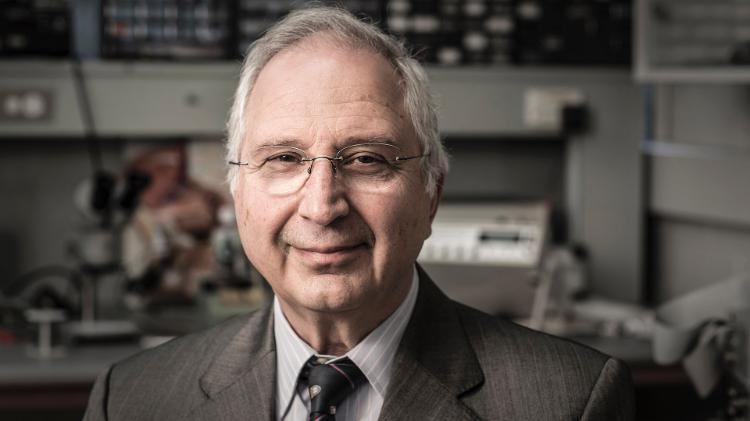 Space Qualification Chair
Space Qualification Chair
Distinguished Professor Anatoly Rozenfeld
 Space Qualification Co-Chair
Space Qualification Co-Chair
Senior Professor Michael Lerch
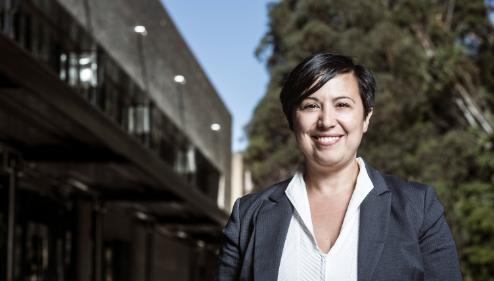 Space Qualification Co-Chair
Space Qualification Co-Chair
Professor Susanna Guatelli
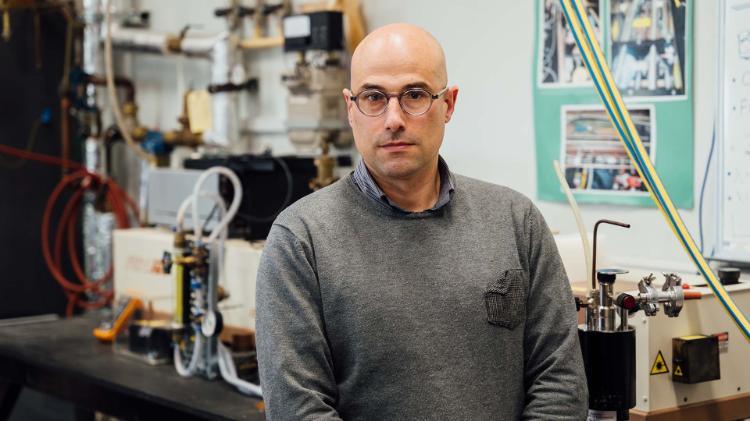 Space Qualification Co-Chair
Space Qualification Co-Chair
Professor Marco Petasecca
Space qualification administration
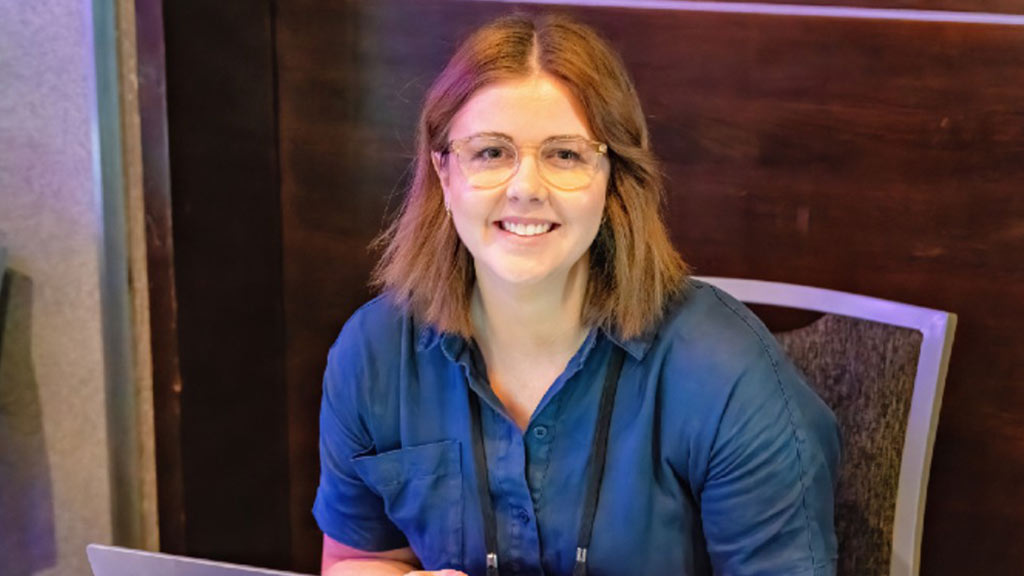 Space Qualification Administration
Space Qualification Administration
Elise Jeffcott
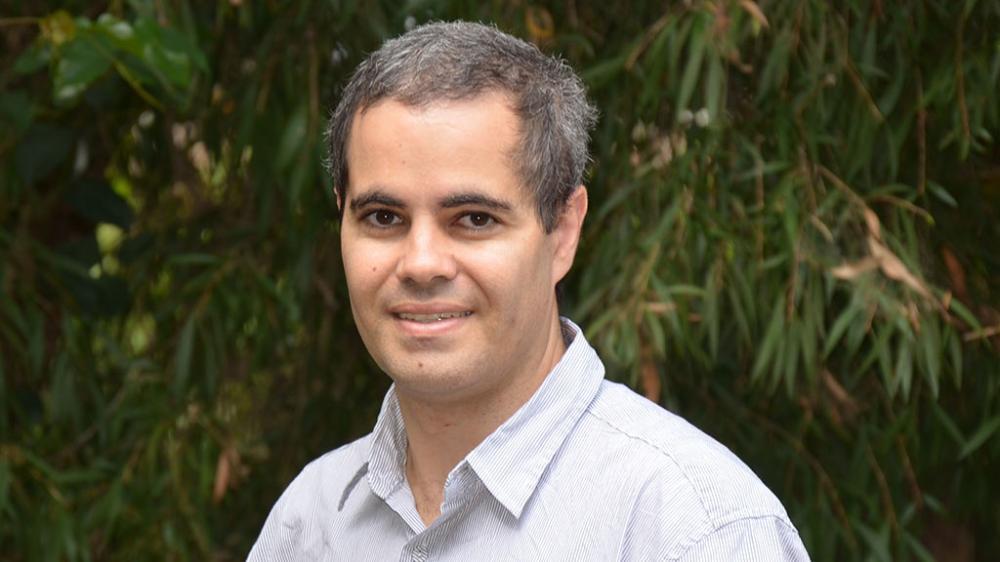 Space Qualification Technical Coordinator
Space Qualification Technical Coordinator
Dr Dean Cutajar
Early Bird Registration ends on January 15, 2024. All other tickets are available until February 10, 2024.
Registration packages
| Ticket name/item | Price (AUD) inclusive of GST | Includes |
|---|---|---|
| Early bird registration (Before January 15 2024) |
$880 | Welcome reception & gala dinner |
| Space Qualification registration | $990 | Welcome reception & gala dinner |
| Student registration | $495 | Welcome reception & gala dinner |
Additional guest tickets
| Ticket name/item | Price (AUD) inclusive of GST | Includes |
|---|---|---|
| Guest welcome reception & gala dinner | $275 | Guest welcome reception & gala dinner |
Samya Ahdjoudj
Thales Alenia Space, France
Samya Ahdjoudj obtained her Physics Engineering degree from INSA Toulouse, FRANCE, in 2010. She worked at Thales Alenia Space France as a radiation engineer specialist since then, in areas of space radiation effects on electronic components and materials, radiation hardness assurance and space weather. Thales Alenia Space delivers solutions for telecommunications, navigation, Earth observation, environmental management, exploration, science and orbital infrastructures. She is responsible for radiation environment specifications and all aspects of Radiation Hardness Assurance (RHA) processes applied on sensitive devices and materials used in space programs (telecommunications, observation and constellations), from devices to satellite shielding definitions. Samya Ahdjoudj is a Member of the RADECS Association Steering Committee.
Marta Bagatin
University of Padova, Italy
Marta Bagatin graduated with honours in Electronic Engineering in 2006 and obtained a PhD in Information Sciences and Technologies in 2010 from the University of Padova. Since September 2022 she has been Associate Professor of Electronics at the University of Padova. Her research interests concern the experimental study and modelling of reliability and ionizing radiation effects on electronic devices for space, nuclear and terrestrial applications, with particular attention to non-volatile memories. Marta is the author or co-author of approximately 180 articles in peer-reviewed journals, presentations at international conferences and book chapters. The results of her work have been recognised with 10 awards at international industry conferences. She has presented invited seminars and lectures on her research at universities, research centres, space agencies and companies in Europe, the USA, Brazil and China.
Janet Barth
NASA, USA
Janet L. Barth has been active in the radiation effects community for over 40 years. She was a lead radiation hardness assurance engineer for NASA space flight programs and supported the NASA Electronic Parts and Packaging (NEPP) Program, which focuses on the reliability of electronic parts for space programs. Janet Barth was on the proposal team for the NASA Living With a Star (LWS) Program and served on NASA’s LWS Science Architecture Committee. She retired from NASA’s Goddard Space Flight Center (GSFC) in 2014 and continues to support NASA programs as an Emeritus Scientist. At her retirement, she was the Chief of GSFC’s Electrical Engineering Division where she was responsible for the delivery of spacecraft and instrument avionics to NASA’s science missions, including the Solar Dynamics Observatory, the SWIFT Burst Alert Telescope, the Lunar Reconnaissance Orbiter, the Global Precipitation Measurement mission, and the Magnetospheric Multiscale Mission. She also directed the development of microwave and optical communications systems and suborbital avionics systems at NASA’s Wallops Flight Facility.
Janet Barth is a Member – Board of Advisors, MERC Aerospace (Miller Engineering & Research Corporation), Greenbelt, Maryland, USA. She was a recipient of the IEEE Marie Sklodowska-Curie Award in 2023 for her leadership and contributions to the advancement of the design, building, deployment, and operation of capable, robust space systems.
Melanie Berg
NASA, Space R3 LLC, USA
Melanie Berg has over 35 years of experience as a designer, verification engineer, instructor, and reviewer for ASIC and FPGA applications. Her more visible accomplishments are her contributions to the FPGA designs for the NASA-sponsored New Horizons Pluto and Beyond Mission, and her research/development in mitigation strategies. Melanie was a member of the Radiation Effects and Analysis group at NASA/GSFC for 20 years; and is the founder/CEO of Space R3 LLC. She has published and presented several papers regarding ionization and microelectronic error-response characterisation, reliable synchronous design methodology, robust verification techniques, mitigation strategies for critical circuitry, reliability/survivability prediction calculations, and hardness assurance for space flight systems.
Benedikt Bergmann
Institute of Experimental and Applied Physics, Czech Technical University, Czech Republic
In 2012, Benedikt Bergmann joined the Institute of Experimental and Applied Physics, Czech Technical University (IEAP CTU), within the frame of ARDENT (Advanced Radiation Dosimetry European Network Training initiative) as a researcher, while in parallel working on his doctorate at the Erlangen Center for Astroparticle Physics, which he received in 2019. He has gained further valuable work experience through stays as a visiting scientist at ESA-ESTEC and PTB Braunschweig (German Metrology Institute), In 2020, he became the head of the department of “electronics and software” at IEAP CTU. Throughout his career, he has been instrumental in the development of miniaturised particle monitors for application in low earth orbit (e.g., the ESA projects SATRAM, MIRAM, and HITPix), proposer and coordinator of Timepix detector networks installed in ATLAS and at LHCb (within the MoEDAL experiment). He is a co-applicant of the EC Horizon 2020 project “Development of a demonstrator for a penetrating particle analyser (PAN) technology” and obtained a Junior Star Grant from the Czech Science Foundation (interdisciplinary, 5% success rate) for the project “Particle identification in high-energy physics experiments and space with advanced detection systems”. Besides collaboration papers, he is the author of 43 publications in impacted journals with more than 240 citations (evaluated in Jan. 2023). He has given invited talks at the International Workshop on Radiation Imaging Detectors (IWORID2022), the IEEE real-time conference, and the IEEE International Conference on Applied Electronics (APPEL2022). He was invited as a lecturer to the 4th summer school on Neutron Detectors and Related Applications (NDRA2022) and prepared a short course at the 7th International Conference on Advancements in Nuclear Instrumentation Measurement Methods and their Applications (ANIMMA2021). He has been a member of the scientific committee of ANIMMA2021, session co-chair of RADECS2023 and is currently a member of the evaluation panel P203 (“Nuclear and particle physics, astronomy and astrophysics”) of the Czech Science Foundation.
Francoise Bezerra
Centre National d'Etudes Spatiales, France
Françoise Bezzerra received her degree in electronic engineering from the French Civil Aviation National School (ENAC) in 1991. She joined the CNES (Centre National d’Etudes Spatiales), the French Space Agency, in 1992 as a quality insurance engineer in charge of microprocessors, ASICs and FPGAs. In 1999, she moved to the radiation group where she still coordinates the radiation test campaigns, supports projects for the selection and use of electronic devices despite the radiation environment and manages R&D studies on these topics. Recognised as an expert in Radiation Hardness Assurance, she supports space projects especially New Space programs where classical RHA rules have to be reworked and adapted. She is the Principal Investigator of two instruments that study radiation effects on electronic devices onboard satellites (CARMEN-MEX) or stratospheric Balloons (BRAD). As a specialist in irradiation facilities, she is also involved in two projects funded by the European Union: Project Consortium Board member and Work Package Leader in the RADNEXT project (RADiation Facility Network for the EXploration of Effects for IndusTry and Research) and Advisory Panel member of the HEARTS project (High-Energy Accelerators for Radiation Testing and Shielding). Françoise Bezerra has authored or co-authored more than 100 papers in radiation testing, Radiation Harness Assurance or in-flight experiments. She is an IEEE/NPSS member and is widely involved in the RADECS association (Radiation and its Effects on Components and Systems). Recently, she was the general chair of the RADECS 2023 conference.
Peter Bradley
Cochlear, Australia
Peter Bradley received a Bachelor of Engineering (Electrical Engineering 1st class honours) in 1987 and a Master of Engineering degree in Biomedical Engineering in 1996, both from the University of NSW, Sydney, Australia and a PhD degree in Medical Physics from the University of Wollongong, Australia in 2000 under Professor Anatoly Rosenfeld’s supervision.
Peter has over 30 years of experience in medical device design. Peter was the system architect for several of Zarlink-Microsemi's medical transceivers which dominate the implanted medical transceiver market (> 10 million implants to date) including the EEtimes product of the year in 2008. He has over 20 published papers and 10 patents on low-power transceiver techniques and published the first paper detailing the effects of cosmic radiation on medical implants.
Peter is currently the Director of Advanced Wireless Technology at Cochlear and a medical device, ionising radiation and low-power communications consultant actively involved in the development of high-reliability systems for next-generation medical transceivers.
In his talk “Ionising Radiation Effects on Implanted Medical Devices” Peter will provide a historical perspective on this important reliability concern and summarise all the key effects (TID, SEU, SEL), reliability requirements and testing of medical devices including SEL testing with scanning lasers.
Simone Gerardin
University of Padova, Italy
Simone Gerardin received the Laurea degree (cum laude) in Electronics Engineering in 2003, and a PhD in Electronics and Telecommunications Engineering in 2007, both from the University of Padova – Italy, where he is now an Associate Professor of Electronics. In 2020 he obtained the habilitation to full professorship. His research has been focused on soft and hard errors induced by ionizing radiation in advanced electronic technologies, and on their interplay with device aging and electrostatic discharges. During his research career, he worked on several technologies and devices, ranging from deep-submicron MOSFETs, FinFETs, tunnel FETs and GaN HEMTs to microprocessors and Field Programmable Gate Arrays (FPGA). In recent years, he has focused on Non-Volatile Memories (NVM, including floating gate cells with 3D architecture, charge trap, resistive, and phase-change technologies) and ultra-high dose effects in MOSFETs for high-energy physics experiments. He took part in several Italian and European projects and collaborated with space agencies (ESA-ESTEC, NASA-JPL, and ASI), research institutions (CERN, RAL, IMEC, INFN), universities, and semiconductor and space companies (STMicroelectronics, Numonyx, Micron, Actel, Thales Alenia Space), both in Europe and in the USA. He has authored or co-authored more than one hundred papers published in international peer-reviewed journals and more than 100 conference presentations, with more than ten winning awards at the RADiation and its Effects on Components and Systems (RADECS) and the Nuclear Space Radiation Effects Conference (NSREC). He also wrote three book chapters and coedited a book in 2016 about radiation effects in electronic devices edited by CRC Press. He presented seminars and invited talks about his research activities to universities, research institutions, and companies in the USA, China, Brazil, and across Europe. He has been session chair at RADECS, at NSREC, and at the European Symposium on Reliability of Electron Devices, Failure Physics and Analysis (ESREF). He co-organised a thematic workshop on NVMs at RADECS 2010. He has been a short course instructor at RADECS 2009, NSREC 2010, RADECS 2015, illustrating basic mechanisms of radiation effects, non-volatile memories for space, and new effects in advanced components, respectively. He has been the short course chair for NSREC 2018, the technical program chair for NSREC 2019, and the general chair for RADECS 2022. From 2014 to 2017 he was a member-at-large of the IEEE NPSS Radiation Effects Steering group. From 2010 to 2018 he was an associate editor for the IEEE Transactions on Nuclear Science, and he was a guest editor for Semiconductor Science Technology in 2015.
Ulrike Grossner
ETH Zurich, Switzerland
Ulrike Grossner has been researching wide bandgap semiconductors, primarily silicon carbide, since 1997. A physicist by training (PhD in 2000), she has been working with semiconductors and their devices both in industry (GE Global Research, ABB Corporate Research) and academia (Friedrich-Schiller-University Jena, Germany, University of Oslo, Norway, Proton Irradiation Facility at PSI, Switzerland). Since 2015, she built up the Advanced Power Semiconductor (APS) Laboratory and is a Full Professor in Power Semiconductors at ETH Zurich, Switzerland. Her interests are the physics-based investigation of ruggedness, reliability, and radiation effects on semiconductor devices. Since 2015, the APS team has published more than 100 papers in peer-reviewed journals and conference proceedings and 9 PhDs have been graduated.
David Hiemstra
MacDonald, Dettwiler & Associates (MDA), Canada
David M. Hiemstra received his Bachelor of Engineering and Management (1984) and Master of Engineering (1993) degrees in Electrical and Biomedical Engineering, respectively from McMaster University. He is a Senior Member of the IEEE. David joined MacDonald, Dettwiler & Associates (MDA), formally Spar Aerospace, in 1984, where he is a Senior Staff Engineer. He is involved in radiation effects and embedded avionics hardening for space, nuclear, and military applications. His ongoing area of research for the past 30 years has been radiation effects on commercial off-the-shelf microelectronics. He has designed analog integrated circuits, hybrid microcircuits and data acquisition electronics. David is currently a technical advisor on Canadarm3 (Lunar Gateway Robotics) avionics. He was embedded avionics technical lead on EXOMARS (Custom Single Board Computer), On-Board Processing (IR&D), RCAM, OSIRIS-REx Laser Altimeter, Earth Video Camera, VIPER, MSL Alpha Particle X-Ray Spectrometer, HTV Berthing Cueing System, and SRMS Display and Control Panel Redesign. He has worked on a number of other space programs including OneWeb, MMX, DDVS, PCW, PhoenixMET, RADARSAT Constellation, Hubble Servicing Cameras, Sapphire, Cassiope, RapidEye, Orbital Express, Space Station Cameras, ISS and Space Shuttle. He designed proof of concept data acquisition and robotics electronics for the ITER fusion reactor. Early in his career, he designed electronics for the shipboard infrared surveillance systems: SIRIUS and AN/SAR-8. David is currently collaborating with the University of Saskatchewan on the study of radiation effects on GPU’s, FGPA’s and data acquisition electronics. He is also a guest lecturer on space radiation effects on embedded avionics. David has taught space radiation effects on embedded avionics at York University, aerospace firms, and IEEE CCECE (2016, 2018 & 2019). He has collaborated extensively with Canadian Universities on space radiation effects. He coordinated radiation effects programs at the University of Toronto Institute for Aerospace Studies, University of Waterloo, and York University. David has been active with NSREC, serving as Member-at-Large Radiation Effects Steering Group (2000-2003), Awards Committee (2002, 2005), Devices and Integrated Circuits Session Chairman (2000), Radiation Effects Data Workshop Chairman (2006), Local Arrangements Chairman (2009), IEEE NPSS ADCOM Radiation Effects (2013-2017), Poster Session Chairman (2015) and as a reviewer on an ongoing basis. He has presented papers at every Nuclear and Space Radiation Effects Conference (NSREC) since 1995. He has authored/co-authored more than 75 papers on nuclear and space radiation effects with an emphasis on field programmable gate arrays
Ani Khachatrian
US Naval Research Laboratory, USA
Dr Ani Khachatrian received her PhD in Chemical Physics from the University of Illinois at Chicago. She completed her Postdoctoral Research Fellowship at the Johns Hopkins University Department of Chemistry and the American Society of Engineering Education Fellowship at the Electronic Science and Technology Division of the US Naval Research Laboratory. Currently, she is a Research Scientist at the Optoelectronics & Radiation Effects Branch of the US Naval Research Laboratory. Dr. Khachatrian’s current research interests include the development and implementation of linear and nonlinear optical methods to simulate single-event effects in micro- and nano-electronic devices and integrated circuits; application of pulsed-lasers to study single-event effects in wide bandgap material systems.
Balaji Narasimham
Broadcom, USA
Balaji Narasimham received his PhD in electrical engineering from Vanderbilt University, Nashville, TN, in 2008. He joined Broadcom, Irvine, CA in 2008 where he is currently a Master R&D Engineer and leads the foundry reliability team. Dr. Narasimham’s work focuses on radiation effects and reliability of semiconductor devices and circuits. He has been instrumental in developing design reliability and soft error guidelines for Broadcom’s diverse products from planar to FinFET technologies enabling them to achieve reliability targets at low performance overhead. His expertise enabled Broadcom to secure product designs in emerging satellite markets, where his guidance has been crucial in developing radiation-hardened designs for specialized applications. He has authored or co-authored over 75 peer-reviewed papers related to his research, has authored a book chapter on single-event transients and has three US patents on efficient soft error mitigation. He has delivered invited talks and tutorials on radiation effects topics at various conferences. His accolades include Outstanding Paper Awards at IEEE NSREC and IEEE RADECS conferences and the prestigious Broadcom President’s Award for Excellence. He has served on the technical program committees and chaired sessions at IEEE IRPS, IEEE NSREC and IEEE RADECS. He also serves as a reviewer for various IEEE journals. He is a Senior Member of the IEEE.
Robert Walters
Air Force Research Laboratory, USA
Dr Walters is the Portfolio Lead for the Spacecraft Components Branch within the Air Force Research Laboratory. He received his PhD in Applied Physics in 1994. Dr. Walters has extensive expertise in spacecraft systems, in particular power systems and survivability in the space environment. As the Portfolio Lead, he is responsible for crafting and executing a diverse technology portfolio that encompasses all aspects of a spacecraft.
Frédéric Wrobel
University of Montpellier, France
Frédéric Wrobel defended his doctoral thesis on the issue of the reliability of electronic devices in 2002. He is now a Full Professor at the University of Montpellier. His main field of expertise is the radiation-matter interaction applied to the reliability of integrated electronic devices. He developed a Monte Carlo nuclear code that simulates the interaction of neutron and proton with matter. He also developed Monte Carlo tools for predicting Single Event in electronic devices. He is the author and co-author of over 200 articles in journals and international conferences and has become a junior member of Institut Universitaire de France (IUF) in 2012.
Masafumi Yamaguchi
Toyota Technological Institute, Japan
Masafumi Yamaguchi received his PhD degree from Hokkaido University, Japan (1978). He is now Professor Emeritus and Invited Research Fellow at the Toyota Technological Institute, Japan, a Visiting Professor, at the Chiba Institute of Technology, Chairman of the PV R&D Review Committee under the NEDO, former Project Leader of the PV R&D Project under the NEDO, former Research Supervisor of the Creative Clean Energy Generation using Solar Energy under the JST. He has received numerous awards such as the Becquerel Prize from the European Commission in 2004, the William Cherry Award from the IEEE in 2008, the PVSEC Award in 2011, the WCPEC Award in 2014 for his outstanding contribution to the development of science and technology of photovoltaic solar energy, and to the International collaboration and cooperation.
The event will be held at the Mantra Mooloolaba Beach.
We have negotiated a cheaper rate for delegates. To take advantage of this, booking through this Accommodation Booking Form is required
Getting to Mantra Mooloolaba Beach
The Mantra Mooloolaba Beach is 13.5 km from the Sunshine Coast Airport (MCY), Maroochydore. Transport from the airport to the hotel can be achieved via taxi, bus or pre-arranged airport shuttle.
The local bus system can also be utilised by catching the 622 bus to Maroochydore terminal, then the 600, 611 or 615 bus to the Mooloolaba Esplanade at Meta Street, followed by a short walk.
SEE study at ANSTO
In collaboration with the School of Space Qualification 2024 the ANSTO Centre for Accelerator Science (CAS) would like to offer the attendees of The School a one-day experience to assist a team of scientists during the different phases involved in performing a Single Event Effect (SEE) test for space qualification of electronic components.
The CAS one-day experience will provide insights on:
- the use of particles accelerators for space radiation testing: space radiation environments, physics of accelerators and advantages of microbeam facilities,
- the decapsulation facility and microstructural analysis of fully exposed IC’s die,
- the advantage of GEANT4 Monte Carlo modelling capabilities with practice calculation of fluxes and LET required for the SEE test,
- and finally, the participation to a test where selected component-off-the-shelf (COTS) will be irradiated with ion microbeam, SEE rates will be recorded as exercise to evaluate cross-sections.
The experience is restricted to 15 participants, PhD students and early-career researchers, however, industry partners are welcome to express their interest.
Date: 8 February 2024
Time: 9 am - 5 pm
Location: ANSTO, 1 New Illawarra Road, Lucas Heights 2234 NSW Australia
Meeting point: ANSTO Discovery Centre
SEE study at CMRP
Visit the Centre for Medical Radiation Physics Laser Facility located at the University of Wollongong for a one-day experience using a laser-based system.
The CMRP one-day experience will provide insights on:
- experience in SEE studies in memory chips using a laser beam technique with Professor Marco Petasecca and an instructor from the School of Physics
The experience is restricted to 20 participants, PhD students and early-career researchers, however, industry partners are welcome to express their interest.
Date: 9 February 2024
Time: 9 am - 5 pm
Location: Centre for Medical Radiation Physics , University of Wollongong NSW 2522 Australia
Meeting point: Building 15, University of Wollongong
All visitors to Australia are required to obtain a visa or Electronic Travel Authority (ETA) in advance to be granted entry to Australia. An ETA provides authorisation to travel to and enter Australia and is electronically linked to your passport. An ETA is for short term stays for tourism or business visitor activities such as attending a conference/meeting. You can apply for a visa through the Electronic Travel Authority (ETA) online and you’ll be issued a visa instantly if you have a passport from one of the following countries:
- Brunei-Darussalam
- Canada
- Hong Kong (SAR PRC)
- Japan
- Korea, Rep of (South)
- Malaysia
- Singapore
- United States
The Visa application process costs AUD$20.00 using your credit card. Apply here.
PLEASE NOTE: If you are a passport holder of any other country than those listed above, you will need to visit https://www.border.gov.au/Trav/Visa-1 to determine your specific visa entry requirements.
- You need to select Business activities as this reflects that you are attending a conference.
- Input your country of passport and age and click next. You are then directed to which visa is appropriate for you.
Important: The Visa Finder does not provide a complete summary of all the visas that may be available to you and makes no recommendations regarding visas that are appropriate for you; also, it provides no guarantee or assurance that you will be granted a visa, or a particular visa. The Visa Finder is not a substitute for exercising your own judgment, making your own enquiries and/or obtaining independent advice regarding your eligibility for any visa. The Commonwealth of Australia does not guarantee the accuracy, currency or completeness of any material in the Visa Finder. Read to the full disclaimer.
Space qualification program
- Day 1 Monday 12 February 2024
- Day 2 Tuesday 13 February 2024
- Day 3 Wednesday 14 February 2024
- Day 4 Thursday 15 February 2024
|
Time |
Activity |
Presenter |
|
8:00-8:05 |
Welcome |
Anatoly Rozenfeld, SSQ Chair, Centre for Medical Radiation Physics, University of Wollongong, Australia |
|
8:05-8:10 |
Opening |
Patricia Davidson, Vice-Chancellor and President, University of Wollongong, Australia Chair of the Board, Australian National Space Qualification Network |
|
8:10-8:15 |
Keynote |
Anna Moore, Director, Institute for Space, Australian National University, Australia |
|
8:15-8:30 |
Keynote |
Arvind Ramana, Director, Space Programs, Australian Space Agency |
|
8:30-9:25 |
Lecture |
Janet Barth, NASA, USA Space Radiation Environment |
|
9:25-10:25 |
Lecture |
Marta Bagatin, University of Padova, Italy Radiation effects in Flash memories: from planar to 3D devices |
|
10:25-10:45 |
Break |
Tea/Coffee |
|
10:45 -11:45 |
Lecture |
Simone Gerardin, University of Padova, Italy Present and Future Non-volatile Memories for Space beyond Flash memories |
|
11:45-12:30 |
Lecture |
Ani Khachatrian, Naval Research Laboratory, USA Application of pulsed lasers to study single-event effects in wide-bandgap material systems, Part 1 (Theory) |
|
12:30-13:30 |
Break |
Lunch and networking with industry |
|
13:30-14:15 |
Lecture |
Ani Khachatrian, Naval Research Laboratory, USA Application of pulsed lasers to study single-event effects in wide-bandgap material systems, Part 2 (Application) |
|
14:15-15:00 |
Lecture |
David Hiemstra, MacDonald, Dettwiler & Associates (MDA), Canada Single Event Effects on Microelectronics due to the Space Radiation Environment and Rate Estimation |
|
15:00-16:00 |
Lecture |
Frédéric Wrobel, Montpelier University, France Use of Monte Carlo methodology to predict Single Event Effect occurrence |
|
16:00-16:30 |
Break |
Tea/Coffee |
|
16:30-16:50 |
N/A |
Q&A |
|
18:45-20:45 |
Welcome dinner |
Mantra Beach Mooloolaba |
|
Time |
Activity |
Presenter |
|
8:00-8:45 |
Lecture |
Melanie Berg, Space R3 LLC, USA FPGA: State-of-the-Art and Radiation Hardness Assurance Practices |
|
8:45-9:30 |
Lecture |
David Hiemstra, MacDonald, Dettwiler & Associates (MDA), Canada A Review of Xilinx FPGA Radiation Effects Performance and Space Applications |
|
9:30-10:15 |
Lecture |
Melanie Berg, Space R3 LLC, USA System-on-Chip (SoC): State-of-the-Art and Radiation Hardness Assurance Practices |
|
10:15-10:30 |
N/A |
Q&A |
|
10:30-11:00 |
Break |
Tea/Coffee |
|
11:00-12:15 |
Lecture |
Balaji Narasimham, Broadcom, USA Single Event Effects: Hardening Techniques for Integrated Circuits |
|
12:15-12:30 |
N/A |
Q&A |
|
12:30-13:30 |
Break |
Lunch and networking with industry |
|
13:30- 14:15 |
Lecture |
Francoise Bezera, French Space Agency (CNES), France Radiation facilities for RHA of space electronics (and materials): requirements, advantages, limitations, alternative or complementary facilities |
|
14:15-15:00 |
Lecture |
Francoise Bezera, French Space Agency (CNES), France Radiation testing for RHA of space electronics: from "Hirel" programs towards "New Space" programs |
|
15:00-15:30 |
Break |
Tea/Coffee |
|
15:30-16:30 |
Lecture |
Samya Ahdjoudj, Thales Alenia Space, France Radiation Hardness Assurance (RHA) processes applied on sensitive devices and materials used in space programs (Part 1) |
|
16:30-16:45 |
N/A |
Q&A |
Social Day
Mooloolaba and the surrounding area is a popular tourist destination with many tour options (things to do in Mooloolaba) which can be booked in advance. Alternatively, you can enjoy beautiful Mooloolaba beach or Maroochydore river.
It is a great opportunity to continue discussions of radiation effects in space electronics and RHA in an informal atmosphere and build networking opportunities for collaborations.
|
Time |
Activity |
Location |
|
18:30-19:00 |
SSQ 2024 Gala Dinner |
Pre-dinner refreshments and entertainment |
|
19:00-22:00 |
SSQ 2024 Gala Dinner |
Mantra Beach Mooloolaba |
|
Time |
Activity |
Presenter |
|
9:00-9:20 |
Lecture |
Marco Petasecca, Centre for Medical Radiation Physics, University of Wollongong Development of a single event upset and latch-up laser |
|
9:20-9:50 |
Lecture |
Samya Ahdjoudj, Thales Alenia Space, France Radiation Hardness Assurance (RHA) processes applied on sensitive devices and materials used in space programs (Part 2) |
|
9:50-10:35 |
Lecture |
Masafumi Yamaguchi, Toyota Technological Institute, Japan Development of high-efficiency and radiation-resistant solar cells for space use |
|
10:35-11:00 |
Break |
Tea/Coffee |
|
11:00-11:30 |
Lecture |
Mitsuru Imazumi, University of Sydney, Australia Space application of solar cells, issues and current technologies |
|
11:30-12:30 |
Lecture |
Benedikt Bergmann, Institute of Experimental and Applied Physics (IEAP), Czech Technical University in Prague, Czech Republic Timepix detectors in Space: From radiation monitoring in low earth orbit to astroparticle physics |
|
12:30-13:30 |
Break |
Lunch and industry exhibition |
|
13:30-13:50 |
Industry presentations |
Stefania Peracchi, NST Centre Accelerator Science, ANSTO ANSTO space radiation testing microbeam facilities and capabilities |
|
13:50-14:10 |
Industry presentations |
Lauren Bezzina & Peter Linardakis, Australian National University The HIAF Space Irradiation Beamline: capabilities and commissioning |
|
14:10-14:30 |
Industry presentations |
Susanna Guatelli, Centre for Medical Radiation Physics, University of Wollongong Monte Carlo simulation for radiation protection for astronauts: a multi-scale approach |
|
14:30-15:00 |
Lecture |
Ulrike Grossner, ETH Zurich, Switzerland SiC power devices: radiation hardness and space applications |
|
15:00-15:30 |
Break |
Tea/Coffee |
|
15:30-16:00 |
Lecture |
Peter Bradley, Cochlear, Australia Ionising Radiation Effects on Implanted Medical Devices |
|
15:40-16:30 |
Industry presentations |
Australian space industry and NSQN partners of Australian RHA and space radiation monitoring capabilities |
|
16:30-16:45 |
Closing |
Anatoly Rozenfeld, SSQ2024 closing and future meetings |



